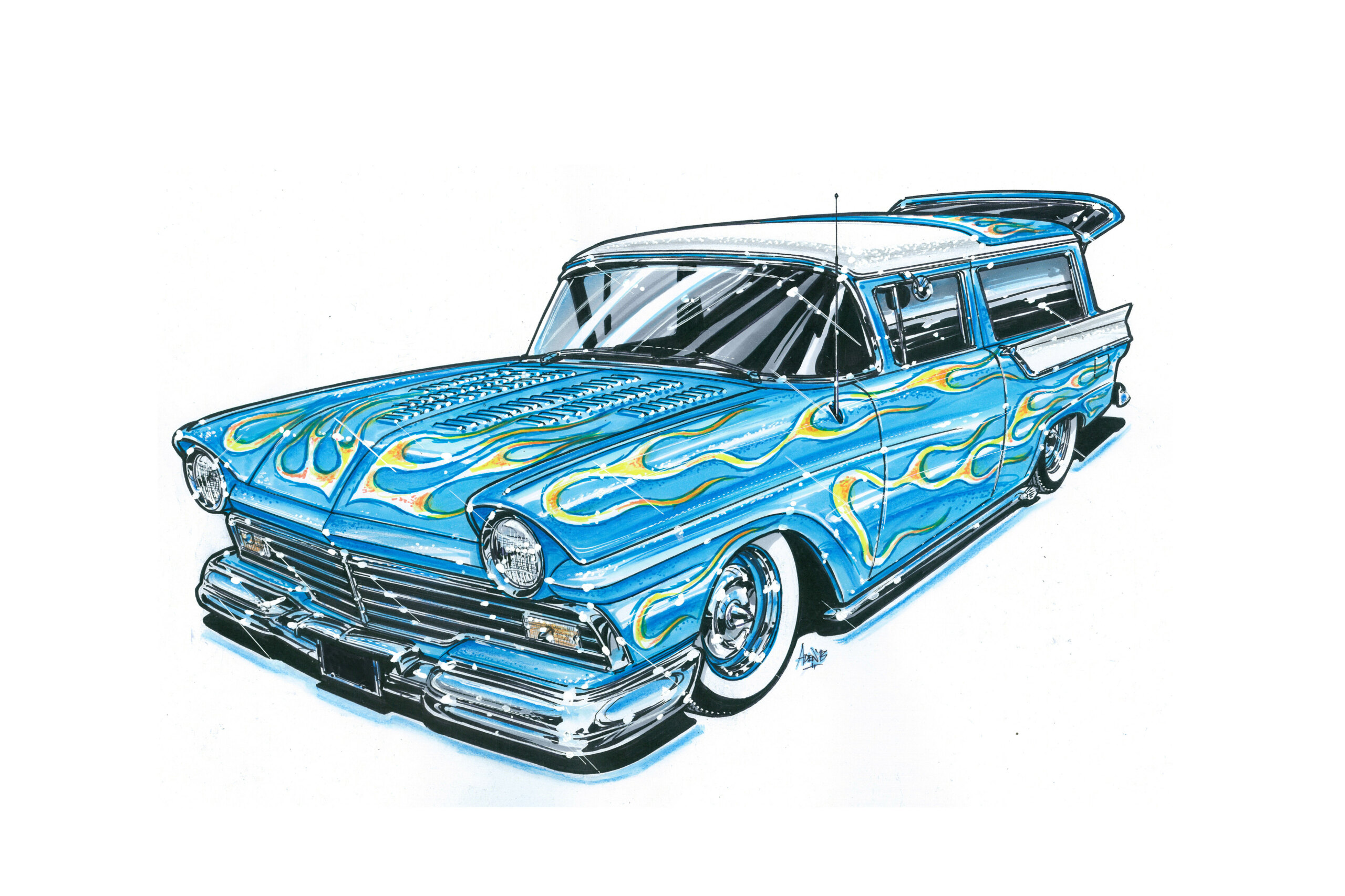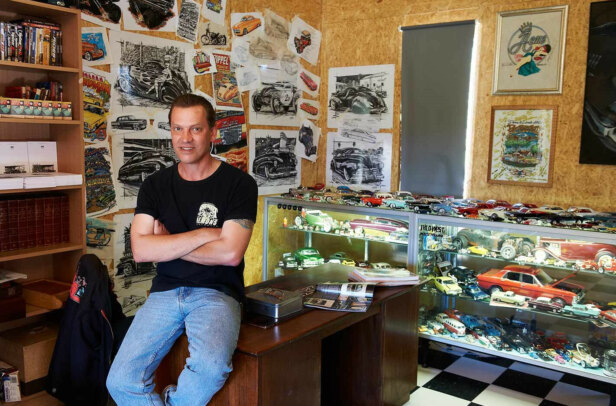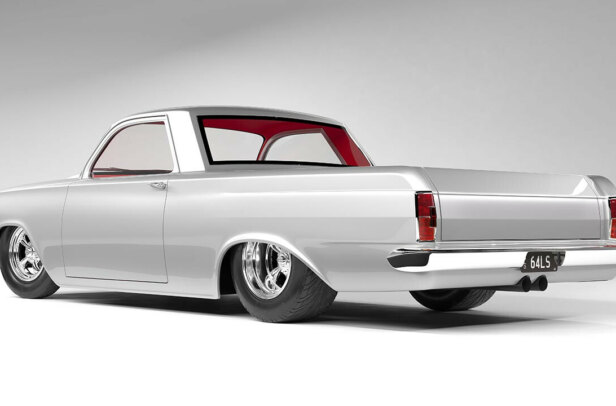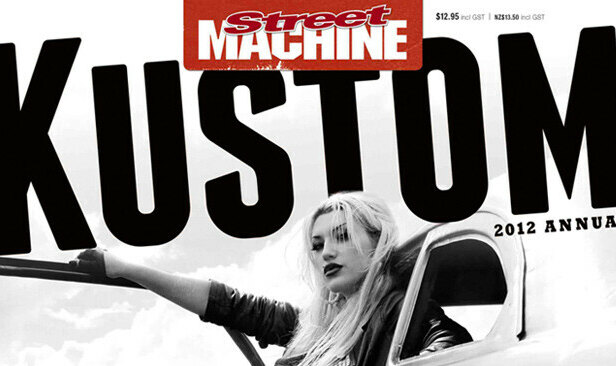Tri-five Chevs – that is, those made in 1955, ’56 or ’57 – are a mainstay of the street machine scene worldwide, and as such are sometimes dismissed by younger folk looking to build something traditional. Single and twin spinner Fords, as well as Chevs made between 1949 and 1954, are the cars to have for the younger greaser. After all, no-one wants to build a car like their old man’s, right?
First published in Street Machines Hot Rod 11, 2013
Yet, the later model Chevs and their contemporaries can make excellent mild customs, as well as being potentially cheaper to build and more practical to own. Steer clear of higher-spec cars such as Impalas and you may well find yourself an affordable base for a killer custom.
By the mid 1950s, Detroit was building some pretty wild-looking cars, meaning that the serious body mods that were popularlised by the likes of Sam Barris weren’t as necessary. Instead, the trend focused on removing excess chrome and accentuating the factory lines with wild paint.
When I was 18, I found a book called Grease Machines, published by Consumer Guide. It featured quite a few cars with Larry Watson paint jobs and it has always stuck with me. For me, it is all about minimal body mods and producing an affordable custom – even if they do have six cylinders under the bonnet! And of course, any of these designs can be applied to Aussie or Pommy cars of the same era.
The Ford
Although sales of Fords and Chevrolets were near enough to lineball for 1957 – around 1.5 million each – the Henrys of that year have never maintained the popularity of their Chev rivals. Which makes them all the more ripe for a mild custom makeover!
Our two-door ’57 Ford wagon has copped a mild de-chroming and had a set of ’56 F100 headlight surrounds swapped in. The only other custom body touches are the louvered bonnet and sunken aerial. Add a set of lake pipes and bullets to the stock hubcaps for extra bling. Paint is two-tone metalflake with seaweed flames. Delicious!
The DeSoto
Our pick of the three is this base-model two-door pillarless ’56 DeSoto coupe – they are rarely customised and are much cheaper than the equivalent Fords and GM product.
To make them special, we’ve added the side trim from the upmarket Adventurer model and removed the front overriders. We’ve removed the iconic factory grille and fitted a floating grille bar with two bullets, which fits nicely within the original bodywork.
Additions include Pontiac bumper bridges, scoops formed into the rear guards, bubble skirts, and Lancer four-bar caps.
1959 Cadillac taillights have become cliché in the custom world and are often employed in completely inappropriate circumstances, but here they work a treat, replacing the factory lenses. Paint is two-tone Watson-style with minor pinstriping.
The Chev
The 1957 Chev is the single most popular car in the street machine world, just as 1950-’51 Mercuries are the quintessential custom. Their popularity has made them somewhat cliché, but they also respond particularly well to a mild custom treatment.
The other upside of the popularity of these cars is that just about every piece you could ever want for them is available cheaply at the click of a mouse. Start with a base model variant and you’ll have a cost-effective and practical car that will bring both boys and girls to the yard in droves!
The recipe for our 150 two-door sedan is simple – remove all trim, badges and handles; fit a ’55 Chev bonnet; and work in a ’57 Buick grille and Kaiser number plate bridges front and rear.
Add Astro Supreme rims, Bellflower exhaust tips and some Appleton spots. Finish with Larry Watson-style scallops with metalflake accents and serve hot!




Comments